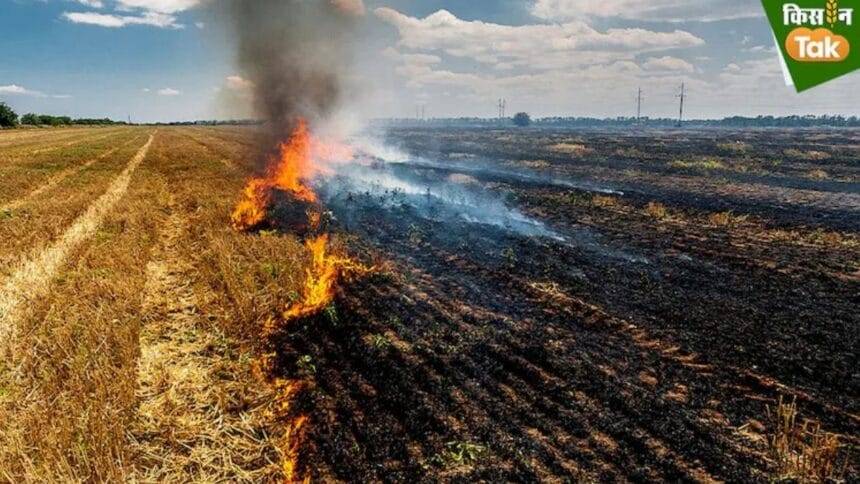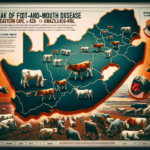Main Points In Hindi (मुख्य बातें – हिंदी में)
-
पराली जलाने की समस्या: देश में बड़े पैमाने पर धान की खेती होती है, जिसके बाद पराली (फसल का अवशेष) जलाने की समस्या उत्पन्न होती है। किसान इसे जलाने के लिए मजबूर होते हैं, जिससे पर्यावरण को गंभीर नुकसान होता है। सर्वोच्च न्यायालय के सख्त आदेशों के तहत पराली जलाने पर प्रतिबंध लगाने के लिए आयोग ने कानूनी कदम उठाए हैं।
-
आईएआरआई की नई तकनीक: भारतीय कृषि अनुसंधान संस्थान (आईएआरआई) ने पराली से खाद बनाने की तकनीक विकसित की है, जो किसानों को रासायनिक उर्वरकों के बिना बेहतर फसल उगाने में मदद करती है। यह प्रक्रिया पर्यावरण की रक्षा करते हुए किसानों के खर्च को भी कम करती है।
-
विंडरो कंपोस्टिंग विधियाँ: विंडरो कंपोस्टिंग एक सरल और प्रभावी तकनीक है, जिसके तहत किसान पराली और अन्य फसल के अवशेषों से जैविक खाद बना सकते हैं। इसके तीन तरीके हैं: जैविक संस्कृति विधि, पराली-गोबर मिश्रण विधि, और चट्टानी फास्फेट समृद्ध खाद बनाना।
-
कंपोस्ट की गुणवत्ता और लाभ: आईएआरआई द्वारा विकसित खाद से किसानों को कम लागत में बेहतर उर्वरक प्राप्त होते हैं। यह न केवल मिट्टी की गुणवत्ता सुधारता है, बल्कि मिट्टी की जैविक और भौतिक संरचना को भी बनाता है, जिससे उपज में वृद्धि होती है।
- पर्यावरण के अनुकूल समाधान: पराली से बनी खाद रासायनिक उर्वरकों की तुलना में बेहतर और सुरक्षित विकल्प है, जो न केवल मिट्टी की उर्वरता बढ़ाता है, बल्कि किसानों के खर्च में भी कमी लाता है और पर्यावरण की रक्षा करता है।
Main Points In English(मुख्य बातें – अंग्रेज़ी में)
Here are the main points from the provided text:
-
Stubble Burning Problem: Paddy cultivation in India leads to significant stubble (crop residue) after harvesting, which many farmers traditionally dispose of by burning. This practice has severe environmental consequences and is now facing legal scrutiny following interventions by the Supreme Court and the Commission for Air Quality Management (CAQM).
-
Composting Technology: The Indian Agricultural Research Institute (IARI) has developed a method for turning stubble into compost, enabling farmers to produce organic fertilizer without relying on chemical fertilizers like DAP or urea. This initiative aims to address the environmental impact of stubble burning while also reducing farmers’ fertilizer costs.
-
Windrow Composting Methods: There are three effective methods for producing compost from stubble:
- Biological Culture Method: Involves creating a stubble heap, treating it with bio-enzyme, and maintaining moisture, yielding compost in 4-5 weeks.
- Stubble-Dung Mixing Method: Combines stubble with cow dung and organic culture, also benefiting from a preparation time of 4-5 weeks.
- Manure Enriched with Rock Phosphate: Incorporates rock phosphate to enhance phosphorus content, resulting in nutrient-rich compost ready within the same time frame.
-
Benefits of Compost vs. Chemical Fertilizers: Compost made from stubble not only reduces costs for farmers compared to traditional chemical fertilizers but also improves soil quality, enhances nutrient availability, and supports sustainable farming practices in various soil conditions.
- Environmental and Economic Advantages: Utilizing stubble for composting promotes environmental sustainability by preventing stubble burning and enriching soil health, ultimately leading to better crop yields and reduced agricultural input costs for farmers.


Complete News In Hindi(पूरी खबर – हिंदी में)
देश में बड़े पैमाने पर धान की खेती होती है और हर साल फसल कटाई के बाद पराली (फसली अवशेष) से समस्या उत्पन्न होती है। कई किसान इसे जलाने का निर्णय लेते हैं, जिससे पर्यावरण को गंभीर नुकसान होता है। सुप्रीम कोर्ट की कड़ी टिप्पणी के बाद, वायु गुणवत्ता प्रबंधन आयोग (CAQM) ने पराली जलाने को रोकने के लिए कठोर कदम उठाए हैं और पूरी तरह से बैन लगाने का लक्ष्य रखा है। इसके बाद, किसानों को पराली जलाने के लिए कानूनी कार्रवाई का सामना करना पड़ सकता है। पराली जलाने से छुटकारा पाने के लिए, भारतीय कृषि अनुसंधान संस्थान (IARI) ने पराली से कम्पोस्ट बनाने की तकनीक विकसित की है।
IARI की तकनीक के साथ, अब किसान पराली से कम्पोस्ट बना सकते हैं और बिना डीएपी, यूरिया या अन्य रासायनिक खादों के अपने फसलों को बेहतर बना सकते हैं। इससे न केवल पर्यावरण सुरक्षित रहेगा, बल्कि किसानों का उर्वकता के लिए खर्च भी कम होगा। IARI जैवप्रविधि एकक के समन्वयक और मुख्य वैज्ञानिक डॉ. शिवधर मिश्रा ने बताया कि पेन्यूमैटिक विधि, जिसे वाइनरो कम्पोस्टिंग कहा जाता है, के माध्यम से पराली से उच्च गुणवत्ता वाली कम्पोस्ट बड़े पैमाने पर और कम समय में बनाई जा सकती है। यह खाद न केवल मिट्टी को नरम करती है बल्कि खेतों में पोषक तत्वों की उपलब्धता को लंबे समय तक बनाए रखती है।
पराली से उर्वरक कम्पोस्ट बनाने के 3 तरीके
वाइनरो कम्पोस्टिंग एक सरल और प्रभावी तकनीक है, जिसके माध्यम से किसान पराली और अन्य फसली अवशेषों से आसानी से जैविक खाद तैयार कर सकते हैं। इस प्रक्रिया में, एक ढेर बनाया जाता है और इसे समय-समय पर पलटा जाता है, जिससे इसमें वायु का संचार बना रहता है और जल्दी कम्पोस्ट तैयार होती है। यहां पराली से कम्पोस्ट बनाने के तीन तरीके बताए गए हैं-
जैविक संस्कृति विधि: इस विधि में, पराली का एक ढेर बनाया जाता है और उस पर बायो-एंज़ाइम पुसा का छिड़काव किया जाता है। ढेर की ऊँचाई 2-2.5 मीटर और लंबाई 10 से 100 मीटर या उससे अधिक हो सकती है। नमक बनाए रखने के लिए समय-समय पर पानी छिड़का जाता है और मशीनों के द्वारा पलटा जाता है। इस प्रक्रिया में, 4 से 5 हफ्तों में उत्तम जैविक खाद तैयार होती है।
पराली और गोबर मिश्रण विधि: इस विधि में, 80 प्रतिशत पराली और 20 प्रतिशत ताजा गाय के गोबर को मिलाकर खाद बनाई जाती है। पराली को लगभग 8-10 सेंटीमीटर लंबाई में काटकर ढेर बनाया जाता है और उसमें गाय का गोबर मिलाया जाता है। फिर इसमें जैविक संस्कृति डाली जाती है। यह विधि सरल और प्रभावी है, जिसमें 4 से 5 हफ्तों में उत्कृष्ट जैविक खाद तैयार होती है।
चट्टान फास्फेट समृद्ध खाद: इस विधि में, पराली और गाय के गोबर के साथ चट्टान फास्फेट का उपयोग किया जाता है, इसके बाद जैविक संस्कृति डाली जाती है जो फास्फोरस की मात्रा को बढ़ाती है। यह फॉस्फो-कम्पोस्ट पौधों के लिए बहुत लाभकारी होती है। इस प्रक्रिया से 4 से 5 हफ्तों में समृद्ध खाद तैयार होती है।
पराली से कम्पोस्ट बनाने की प्रक्रिया
कम्पोस्ट बनाने की पूरी प्रक्रिया में, पराली के ढेर की ऊँचाई और लंबाई उपलब्ध स्थान के अनुसार तय की जाती है। जैविक संस्कृति डालने के बाद, पर्याप्त नमी बनाए रखी जाती है और मशीनों या हाथों से समय-समय पर पलटा जाता है। डॉ. शिवधर मिश्र के अनुसार, पहले पलटने की क्रिया उस समय की जाती है जब ढेर में पराली डाली जाती है ताकि सभी अवशेष समान रूप से मिल जाएं। इसके बाद, दूसरा पलटना 10 दिन, तीसरा 25 दिन, चौथा 40 दिन और पाँचवां 55-60 दिन के बाद किया जाता है। पलटने की संख्या और समय अंतराल की वृद्धि या कमी पराली की स्थिति और आवश्यकता के अनुसार की जा सकती है।
इस तरह तैयार की गई खाद 60 से 70 दिनों में खेत में डालने के लिए तैयार होती है। यदि खाद का तत्काल उपयोग नहीं करना है, तो इसे बड़े ढेर बनाकर सुरक्षित रखा जाता है और अच्छी तरह ढक दिया जाता है ताकि इसके पोषक तत्व नष्ट न हों। तैयार की गई खाद की गुणवत्ता उसके उपयोग किए गए सामग्रियों पर निर्भर करती है और इसमें गाय के गोबर की खाद की तुलना में अधिक मात्रा में नाइट्रोजन, फास्फोरस, पोटाश और अन्य सूक्ष्म पोषक तत्व होते हैं।
पराली से तैयार की गई कम्पोस्ट रासायनिक खाद से बेहतर क्यों है?
IARI की तकनीक से तैयार की गई पराली की कम्पोस्ट किसानों को कम लागत पर बेहतर खाद प्रदान करती है। किसान वाइनरो कम्पोस्टिंग से तैयार की गई खाद का उपयोग करके डीएपी यूरिया पर वे जो खर्च करते हैं, उससे कम लागत पर भरपूर फसल उत्पादन कर सकते हैं। यह खाद न केवल मिट्टी को नरम करती है बल्कि खेतों में पोषक तत्वों की उपलब्धता को लंबे समय तक बनाए रखती है। वाइनरो कम्पोस्टिंग नमकीन और क्षारीय मिट्टी में भी प्रभावी होती है, जबकि डीएपी का इन मिट्टियों में कोई प्रभाव नहीं होता है। यह कम्पोस्ट संतुलित पोषक तत्वों से भरपूर होती है, जो मिट्टी की जैविक और भौतिक संरचना को सुधारती है और इसकी उर्वरता को बढ़ाती है।
पराली से तैयार की गई खाद किसानों के लिए एक लाभकारी विकल्प है। यह न केवल मिट्टी की गुणवत्ता में सुधार करती है, बल्कि किसानों के उर्वकता पर खर्च को भी कम करती है और पर्यावरण को भी सुरक्षित रखती है।
इसे भी पढ़ें –
Complete News In English(पूरी खबर – अंग्रेज़ी में)
Paddy is cultivated on a large scale in the country and every year the problem of stubble (crop residue) arises after harvesting. Many farmers dispose of it by burning, which causes serious damage to the environment. After the Supreme Court’s strict comment on stubble burning, the Commission for Air Quality Management (CAQM) has taken strict steps to stop it and has aimed for a complete ban. After this, farmers may have to face legal action for burning stubble. To get rid of stubble burning, the Indian Agricultural Research Institute (IARI) has developed the technology of making compost from stubble.
With IARI’s technology, farmers can now make compost from stubble and grow better crops from their fields without the use of DAP, urea or other chemical fertilizers. This will not only keep the environment safe, but farmers’ expenditure on fertilizers will also reduce. Dr. Shivdhar Mishra, Coordinator and Chief Scientist of IARI Biomass Utilization Unit, informed that the pneumatic method, called windrow composting, through which better compost can be made from stubble on a large scale and in less time. This manure not only softens the soil but also maintains the availability of nutrients in the fields for a long time.
3 ways to make fertile compost from stubble
Windrow composting is a simple and effective technique, through which farmers can easily prepare organic fertilizer from stubble and other crop residues. In this process, a heap of straw is made and it is turned from time to time, due to which air circulation is maintained in it and compost is prepared quickly. Here, windrow composting can be done by three methods-
Biological culture method: In this method, a heap of stubble is made and bio-enzyme Pusa is sprayed on it. The height of the pile can be 2-2.5 meters and length can be 10 to 100 meters or more. To maintain moisture, water is sprinkled from time to time and turning is done with machines. In this process, excellent organic fertilizer is prepared in 4 to 5 weeks.
stubble dung mixing method , In this method, fertilizer is made by mixing 80 percent straw and 20 percent fresh cow dung. The stubble is cut into about 8-10 cm length and piled up and cow dung is mixed in it. After this organic culture is added. This method is simple and effective, in which excellent organic fertilizer is prepared within 4 to 5 weeks.
Manure enriched with rock phosphate: In this method, rock phosphate is used along with straw and cow dung, after which organic culture is added which increases the amount of phosphorus. This phospho-compost is very beneficial for plants. This process produces rich compost in 4 to 5 weeks.
process of making compost from stubble
In the entire process of making compost, the height and length of the stubble pile is decided according to the available space. After adding organic cultures, adequate moisture is maintained and turning is done from time to time using machines or hands. According to Dr. Shivdhar Mishra, the first turning is done immediately after adding the stubble to the heap so that all the remains are mixed evenly. After this, the second turning is done after 10 days, the third after 25 days, the fourth after 40 days and the fifth after 55-60 days. The number and time interval of turnings can be increased or decreased depending on the condition and requirement of the stubble.
The compost prepared in this way is ready to be put in the field within 60 to 70 days. If the compost is not to be used immediately, then it is kept safe by making big heaps and covering it well, so that its nutrients are not destroyed. The quality of the prepared compost depends on the materials used in it and it contains nitrogen, phosphorus, potash and other micronutrients in greater quantities than cow dung manure.
Why is compost prepared from stubble better than chemical fertilizer?
The compost prepared from stubble using IARI’s technology provides better fertilizer to the farmers at a lower cost. Farmers can produce abundant crops by using manure prepared through windrow composting at a lesser cost than the money they spend on DAP urea. This manure not only softens the soil but also maintains the availability of nutrients in the fields for a long time. Windrow composting works effectively even in saline and alkaline soils, whereas DAP has no effect in such soils. This compost is rich in balanced nutrients, which improves the biological and physical structure of the soil and increases its fertility.
Compost made from stubble is a beneficial option for farmers. This not only improves the quality of the soil, but also reduces the farmers’ expenditure on fertilizers and the environment can also be saved.








